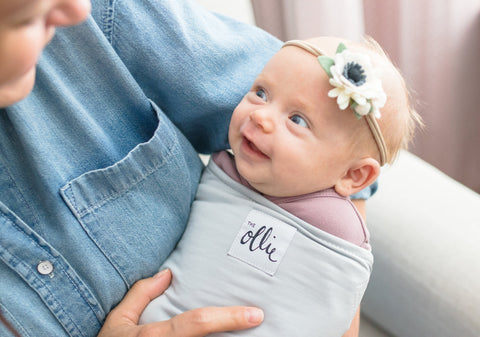Breast Cancer Awareness Month: Let's Discuss The Warning Signs
2018-10-05

Here at The Ollie World, we believe that moms deserve to partake in guilt-free self-care – but what exactly does that look like? Many think of indulgences like bubble baths and pedicures, and though pampering yourself is important, oftentimes self-care looks like getting proper nutrition, sleep, and keeping up with doctor's appointments.
Every year, 1 in 8 women is diagnosed with breast cancer. This disease has brought tragedy to millions of families, and we want to take a moment to informing women about risk factors and preventative measures that they can take through simple lifestyle changes. By doing so, we can hopefully enable women to pay close attention to their bodies and catch anything faster that might be awry.
Thankfully, as a result of more support and funding in an effort to cure breast cancer, researchers have seen a steady decline in it’s mortality since 1989. Due to increased awareness, treatment improvements, and early detection methods, breast cancer is becoming less and less common, but there is still work to be done.
What Are The Symptoms?
In most early onset cases of breast cancer, there are no obvious warning signs or symptoms, which is why regular screenings are so important. If symptoms are apparent, they could manifest as one or several of the following ailments:
- Dimples or irritation of the skin
- Pain or swelling of the breast
- Thickening or redness of the nipple or skin of the breast
- Pain or inward turning of the nipple
- Discharge from the nipple (other than milk)
Why is Breast Cancer Commonly Misdiagnosed?
Despite the early detection efforts such as yearly mammograms for women over 40, breast cancer is still commonly misdiagnosed. Sometimes, radiologists can incorrectly interpret mammogram scans, resulting in either a false-positive (doctors read the scan as cancer but are later proven wrong) or a false-negative (doctors cannot detect a tumor from the image). Biopsies done on a woman’s breasts can also be misdiagnosed. Tissue analyzed from a breast during a biopsy can cause doctors to undertreat or too-aggressively treat the condition.
Who Is At Risk?
There are several factors associated with breast cancer that put women at an increased risk of being diagnosed. Some are based on an individual’s biological makeup, while others relate to lifestyle factors.
- Age: The risk of developing breast cancer increases as you get older. Most breast cancers are diagnosed at age 50 and older.
- Lifestyle Factors: Alcohol consumption, tobacco use, and being overweight will have a negative impact on your overall health as well as your chances of developing breast cancer
- Early Menstruation and/or Late Menopause: Women who began menstruating before age 12 have a slightly increased risk of breast cancer, likely due to longer exposure to estrogen and progesterone. Similarly, women who went through menopause later have an increased risk due to extended hormone exposure.
- Family History: If a first-degree relative (mother, sister, daughter) has had breast cancer, your risk nearly doubles. If two first-degree relatives have had it, your risk triples.
How Can Women Reduce Their Risk?
There’s no cure or guaranteed prevention method for breast cancer. However, there are best practices and measures one can follow to limit their risk.
- Pregnancy and Breastfeeding: Women who become pregnant at least once tend to have a lower rate of breast cancer. Breastfeeding has also been linked to a lower risk of the disease.
- Breast Cancer Screenings: Especially if you are at an increased risk of breast cancer, being regularly screened for the disease can help to detect the disease earlier and prevent it from spreading. Annual mammograms are recommended for women age 40 and older.
- Surgery: Some women who have a heightened risk of breast cancer may choose to have their breasts reduced through a prophylactic mastectomy. Removal of the ovaries may also decrease the risk of breast cancer by reducing the amount of estrogen in the body.
- Healthy Lifestyle: Maintaining a healthy diet and weight, avoiding smoking, and limiting your alcohol consumption can reduce your risk of developing the disease.
So this October during Breast Cancer Awareness Months, have the important conversations with the women in your life about the need for annual mammograms, self-breast exams, and alterations in everyday life to ensure long-term wellness and health. For more health and safety information, visit ConsumerSafety.org.
About the Author:

Chandler Coleman is a Consumer Insights Investigator for ConsumerSafety.org, a health and safety resource that covers a variety of topics including medical conditions, general consumer safety topics, and hazards that may impact the welfare society.
